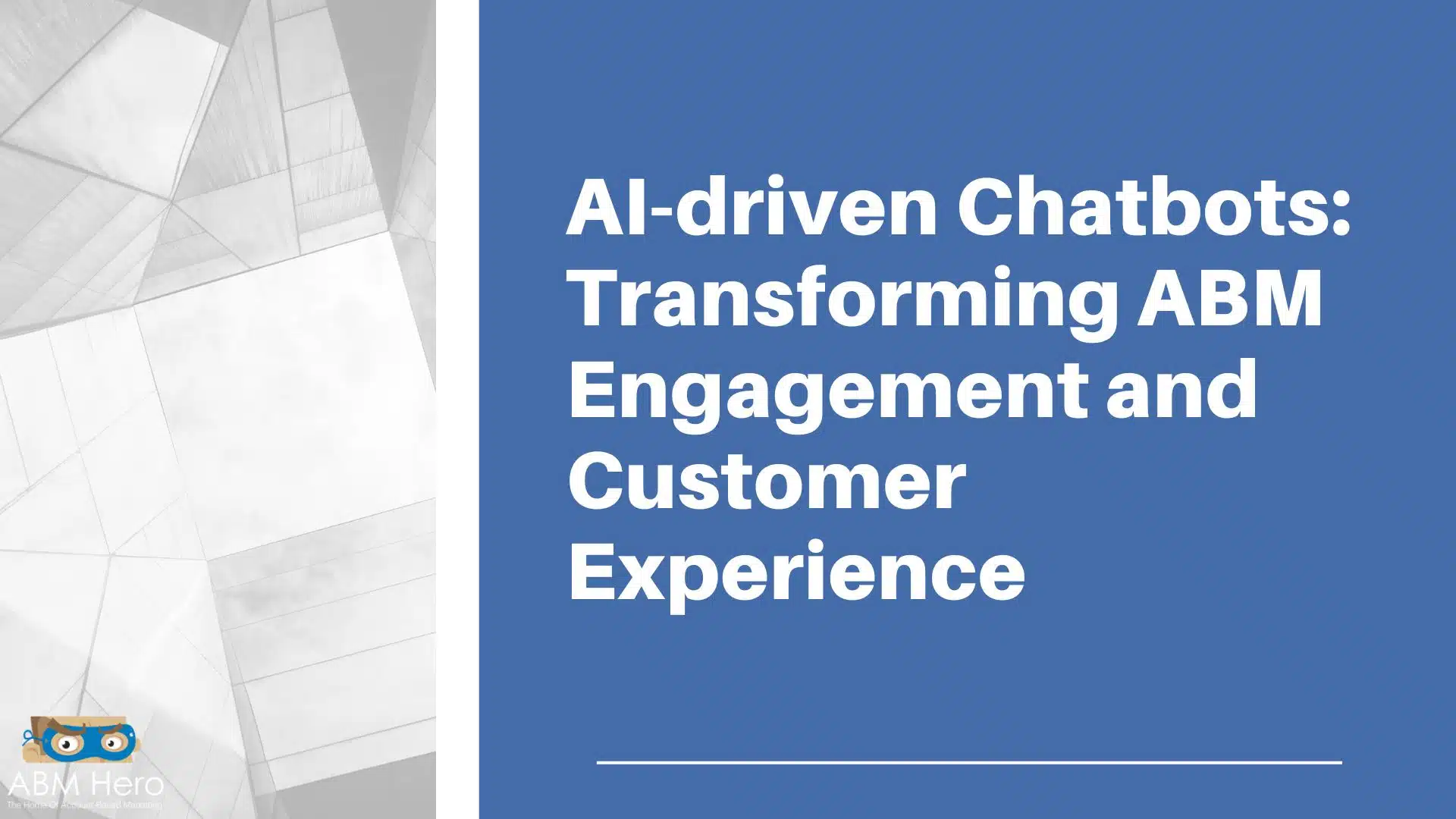In the digital transformation era, B2B companies constantly seek innovative ways to enhance customer engagement and deliver exceptional experiences.
One technology that has emerged as a game-changer in this regard is AI-driven chatbots.
These intelligent virtual assistants are revolutionizing Account-Based Marketing (ABM) engagement and transforming the customer experience.
In this blog, we will explore the key insights B2B decision-makers need to know about AI-driven chatbots and their impact on ABM and customer interactions.
AI-Powered Chatbots on the Rise
Picture this: you’re strolling through the bustling streets of the internet, searching for answers, and suddenly, out of nowhere, a digital sidekick appears!
Meet AI-powered chatbots, the witty and intelligent virtual companions that have taken the online world by storm.
So, what exactly are these chatty wonders? AI-powered chatbots are like the brainy offspring of artificial intelligence and conversational technology.
They have been meticulously trained in the arts of natural language processing (NLP) and machine learning, equipping them with the power to understand your queries and respond with impressive accuracy.
It’s like having a tech-savvy buddy who can communicate like a pro.
In recent years, these charismatic chatbots have skyrocketed in popularity, and for good reason! Here’s how they’ve managed to charm their way into the hearts of digital enthusiasts:
24/7 Customer Support
Unlike their human counterparts, AI-powered chatbots never hit the snooze button. They’re available round-the-clock, ready to provide assistance and answer your burning questions, even in the wee hours of the morning.
Late-night cravings for knowledge? They’ve got you covered.
Speedy Response Time
Patience may be a virtue, but let’s be honest, waiting for hours (or worse, days) for a response is a real buzzkill.
With AI-powered chatbots, you get instant replies faster than a speeding bullet. No more nail-biting suspense or mind-numbing hold music – just quick and efficient solutions.
Optimal Personalization
These chatbots have a magical knack for tailoring their responses to your needs.
They can adapt to your preferences, speak in your preferred tone, and even remember your previous interactions.
It’s like having your digital twin, minus the confusing family dynamics.
A Swiss Army Knife of Knowledge
AI-powered chatbots are encyclopedic gurus on steroids.
They have access to a vast trove of information and are not stingy with it. Need the latest industry trends? Boom! They’ve got it.
Are you looking for tips and tricks? Kapow! They’ve got your back. Whether you’re a seasoned pro or a curious newbie, these chatbots are always armed with the knowledge you seek.
Continuously Evolving
AI-powered chatbots need to be more content with being static know-it-alls. They’re constantly learning, growing, and improving their skills.
They gather valuable insights and feedback with each interaction, fine-tuning their responses to become more accurate and helpful. It’s like watching an underdog superhero transform into an unstoppable force.
Criticisms Pointed Out to AI-Driven Chatbots
Robotic and Less Personalized
Critics raised concerns about AI-powered chatbots being robotic and devoid of human comprehension, which has a valid point, especially regarding early iterations of chatbot technology.
However, with natural language processing (NLP) and machine learning advancements, AI-powered chatbots have made significant progress in mimicking human-like interactions and comprehension.
While they may not possess the same empathy and nuanced understanding as humans, modern AI chatbots have evolved to offer more natural and contextually relevant responses.
It’s important to note that an AI chatbot’s success depends on various factors, including the quality of training data, algorithms, and ongoing optimization.
A well-designed and adequately trained chatbot can demonstrate impressive language understanding and even engage in witty or conversational interactions.
To address the criticism of robotic responses, developers and companies focus on enhancing chatbot capabilities through different means.
Natural Language Processing (NLP): AI chatbots utilize NLP algorithms to understand and interpret human language, allowing them to comprehend user queries and generate appropriate responses.
NLP models have significantly improved in recent years, enabling chatbots to understand context, intent, and even sentiment to a certain extent.
Machine Learning and AI Training: Chatbots learn and improve their performance over time through machine learning algorithms.
They can be trained on extensive conversation datasets to improve their language comprehension, response accuracy, and conversational flow.
Continuous learning and feedback mechanisms contribute to their ability to provide more human-like responses.
Context Awareness: AI chatbots can leverage contextual information from ongoing conversations or user profiles to provide more personalized and relevant responses.
They can remember past interactions and use that knowledge to enhance future conversations, resulting in a more natural and coherent user experience.
Hybrid Approaches: Some chatbot implementations combine the strengths of AI and human intervention.
When a chatbot encounters complex or emotionally sensitive queries, it can seamlessly transfer the conversation to a human agent with the necessary empathy and comprehension.
While AI-powered chatbots may still have limitations in fully replicating human understanding, ongoing technological advancements continue to bridge the gap.
Striking a balance between automation and human intervention remains crucial for delivering exceptional customer experiences and addressing the critics’ concerns.
Inability to Handle Complex Queries
The doubts raised by users regarding transacting with chatbots due to their dependency on pre-defined scripts and limited capability in handling complex queries are valid concerns.
These limitations impact the user experience and create frustration or dissatisfaction. However, it’s essential to consider the following points:
Proper Expectation Setting: Companies should transparently communicate the capabilities and limitations of their chatbots to users.
By setting clear expectations, users can understand the scenarios where chatbots can assist effectively, such as handling common queries, providing basic information, or guiding through simple transactions.
Seamless Escalation to Human Support: To address complex queries or situations requiring human intervention, companies can design chatbot systems to transfer the conversation to a human agent when needed seamlessly.
This ensures that users can access the appropriate support and prevents prolonged frustration due to chatbot limitations.
Continuous Improvement and Machine Learning: AI-powered chatbots can improve performance through machine learning algorithms.
By analyzing user interactions and feedback, companies can identify areas of improvement and refine the chatbot’s capabilities to handle a broader range of queries more effectively.
Hybrid Approach: Some companies adopt a hybrid approach by combining the strengths of AI-powered chatbots and human agents.
Chatbots can handle initial interactions, gather relevant information, and then seamlessly hand over the conversation to a human agent who can provide personalized and tailored assistance for more complex queries or transactions.
Iterative Development: Companies should engage in iterative development and actively seek user feedback to enhance their chatbot systems.
By incorporating user insights and iteratively refining the chatbot’s responses and capabilities, companies can address user concerns and provide a more satisfactory experience over time.
While there are limitations, companies are continuously investing in research and development to improve the capabilities of AI-powered chatbots.
By addressing these concerns and refining the technology, companies can create more reliable and user-friendly chatbot experiences, increasing user confidence in transacting with chatbots and delivering satisfactory outcomes.
Data Security Threats
Data security and privacy are significant concerns when it comes to AI-powered chatbots. Here are some insights regarding this issue:
Data Protection Measures: Companies employing AI-powered chatbots must prioritize robust data protection measures. This includes implementing encryption, secure data storage, access controls, and regular security audits.
By adhering to best practices, companies can minimize the risk of data breaches and unauthorized access.
Transparent Data Policies: Companies must communicate their data collection and usage policies to users.
This includes explaining what data is collected, how it is stored and processed, and for what purposes.
Transparency helps establish trust and allows users to make informed decisions about interacting with the chatbot.
Anonymization and Aggregation: Companies can implement data anonymization and aggregation techniques to protect user privacy.
By removing personally identifiable information or aggregating data into statistical summaries, we minimize the risk of individual data exposure while still allowing for gaining valuable insights from the aggregated data.
Compliance with Privacy Regulations: Companies should ensure that their chatbot operations comply with relevant privacy regulations such as the General Data Protection Regulation (GDPR) or the California Consumer Privacy Act (CCPA).
These regulations provide data collection, processing, and user consent guidelines, empowering individuals to maintain control over their personal information.
User Consent and Opt-out Options: It is essential to obtain user consent before collecting and processing their data.
Companies should provide precise opt-in and opt-out mechanisms, allowing users to control the extent of data collection and use.
Respecting user preferences and allowing them to withdraw consent helps build trust and respect for privacy.
Data Retention Policies: Companies should establish appropriate data retention policies, ensuring that collected data is retained only for as long as necessary. Regularly reviewing and purging unnecessary data reduces the risk of data breaches and aligns with privacy principles.
Companies must prioritize data security and privacy as they develop and deploy AI-powered chatbots.
By implementing strong security measures, transparent policies, and compliance with regulations, companies can mitigate risks, protect user data, and foster trust with their customers.
In this era of AI-driven customer engagement, it is wise to remember that the true essence of successful B2B interactions lies in combining the power of technology with the empathy and understanding that only humans can provide.
By leveraging AI-powered chatbots as valuable allies, B2B companies can pave the way for a future where personalized, efficient, and secure customer experiences become the norm.





